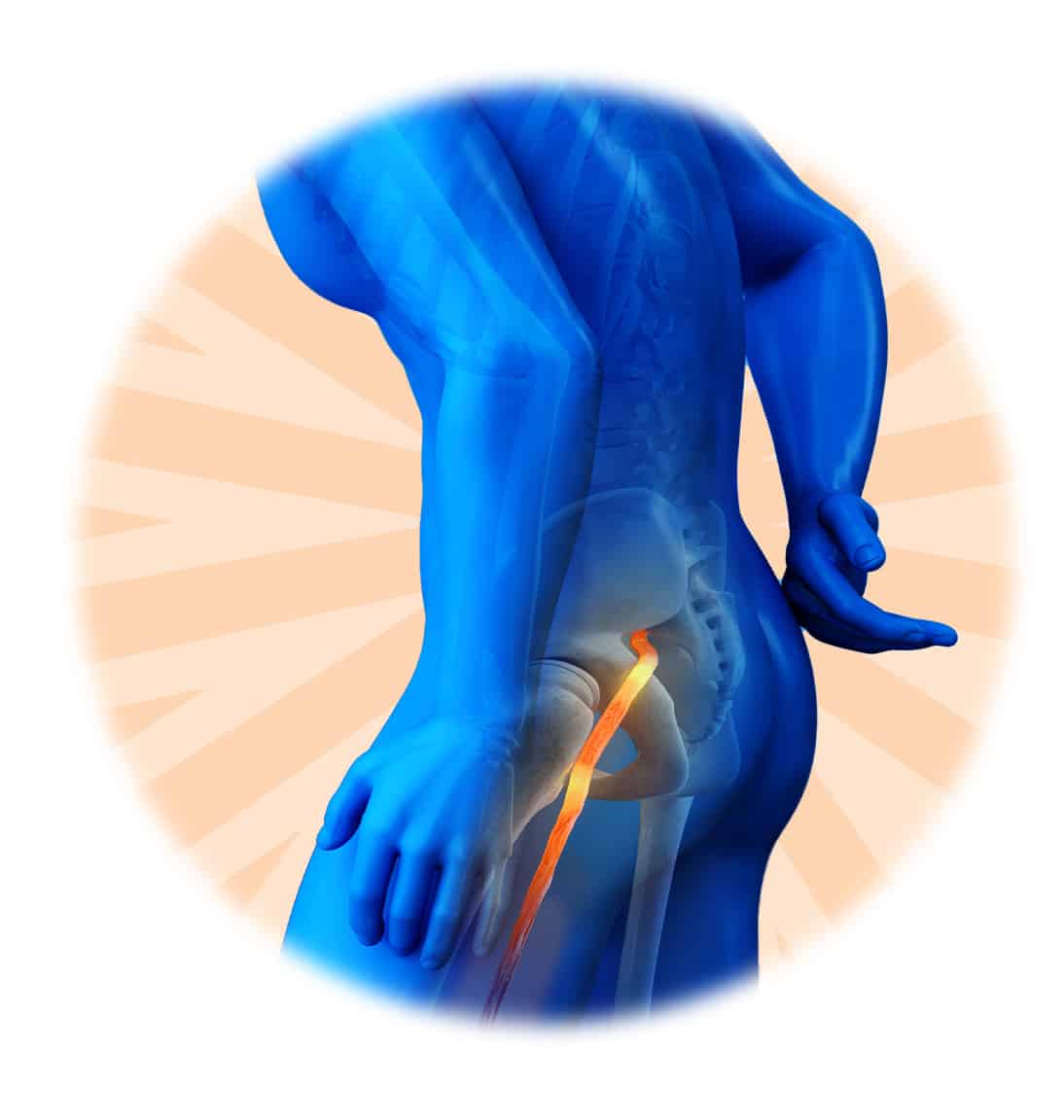Sciatica (Lumbar Radiculopathy) Pain Management Specialists
Sciatica
Condition Overview
Sciatica pain occurs when the longest nerve in your body, the sciatic nerve, becomes irritated or compressed. Picture it as your body’s way of signaling distress along a major highway of nerves running from your lower back through your hips and down the back of the leg — sometimes all the way to the toes.
Also known as lumbar radiculopathy, sciatica isn’t just a standalone condition with a straightforward diagnosis; it’s often a symptom of other underlying issues like spinal or neural foraminal stenosis, pinched nerves, herniated discs, bone spurs and sometimes tumors. Whatever the cause of this discomfort, there are ways to treat it and find relief.
If you’re experiencing discomfort from sciatic, contact a Nura pain specialist today. Our experts provide personalized treatment plans designed to relieve your pain and help you regain your mobility.
Videos
Learn more about sciatica
Symptoms of Sciatica
Sciatica pain can be felt anywhere along the path from your lower back through each leg. The severity can vary from mild to severe and is usually described as a sharp, shooting or burning sensation radiating down the sciatic nerve. It may also trigger cramping sensations following a similar pattern.
Typically, only one side of the body is affected and the pain intensifies with prolonged sitting, bending, twisting or sudden movements like coughing and sneezing. There can also be associated numbness in the same pattern.

Diagnosis of Sciatica
Our pain specialists will review your medical history and conduct a physical exam to pinpoint the location and severity of your sciatica. If the pain is severe or persistent, additional imaging tests — spinal X-rays, MRIs and CT scans — may be needed.
Factors like age, diabetes, lifestyle choices and certain occupations can increase the risk of sciatica. Understanding these risks helps us customize treatment plans and preventative measures for your specific needs.
Treatment Options for Sciatic Nerve Pain
Treating sciatica often requires a multifaceted approach, incorporating both non-surgical and surgical methods. The primary focus is on managing pain and improving mobility, which may include physical therapy, adjustments to daily habits or medication. When conservative treatments are not effective, surgical intervention may be explored to relieve pain and enhance nerve function.

Real people, real stories
My quality of life went from 10% to 150%.
Nearly 10 years ago, while she was being treated for a herniated disc, Rachel Saum’s life took a dramatic change for the worse.
The doctor who was treating her accidentally injected dye directly into Rachel’s spinal column. The dye destroyed a critical membrane and caused the onset of an extremely rare, incredibly painful condition.
Read More
Find Pain Relief
Schedule an appointment with one of our pain specialists by filling out our appointment request form or giving us a call at 763-537-6000.
